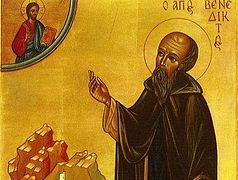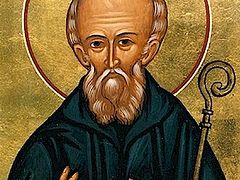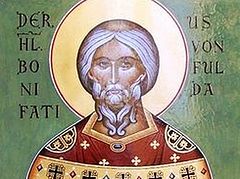Iona, Scotland, August 24, 2017
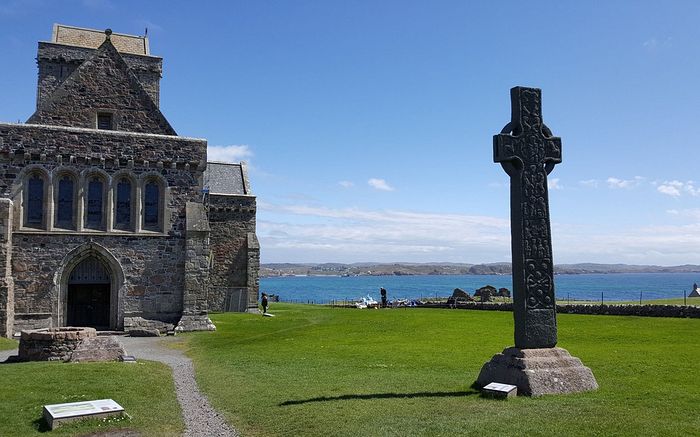 Iona Abbey and St. Martin's cross, as archaeologists have uncovered conclusive evidence that a wooden hut traditionally associated with St. Columba at his ancient monastery on the island of Iona dates to his lifetime in the late sixth century CREDIT: PA
Iona Abbey and St. Martin's cross, as archaeologists have uncovered conclusive evidence that a wooden hut traditionally associated with St. Columba at his ancient monastery on the island of Iona dates to his lifetime in the late sixth century CREDIT: PA Archaeologists have used carbon dating to prove that samples of hazel charcoal unearthed in a dig on the island of Iona 60 years ago originate from the lifetime of St. Columba, the enlightener of Scotland and perhaps the greatest Celtic saints who was born in 521 and reposed in 597. The structure, believed to be the saint’s cell where he prayed and studied, dates to between 540 and 650, reports The Telegraph.
St. Columba is described in his biography, written about 100 years after his death by his successor St. Adomnan, as often writing in a wooden cell on a rocky hill called Torr an Aba, or, “the mound of the abbot.”
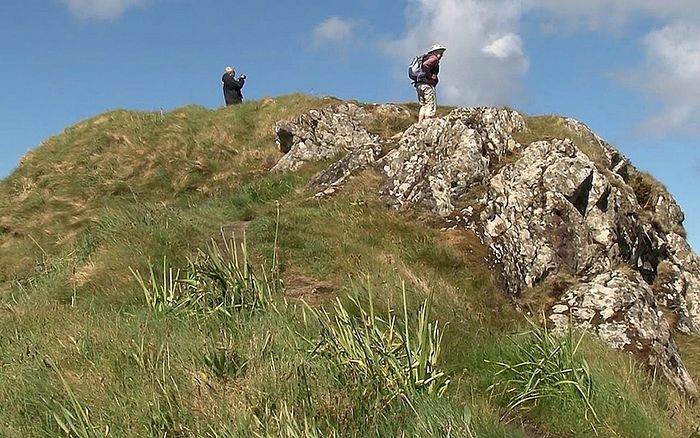 Archaeologists on top of a mound where they uncovered conclusive evidence that a wooden hut traditionally associated with St. Columba at his ancient monastery on the island of Iona dates to his lifetime in the late sixth century CREDIT: PA
Archaeologists on top of a mound where they uncovered conclusive evidence that a wooden hut traditionally associated with St. Columba at his ancient monastery on the island of Iona dates to his lifetime in the late sixth century CREDIT: PA The wood samples were originally discovered in 1957 by archaeologist Dr. Charles Thomas, but carbon dating was only just emerging at the time and an expensive process. The find wound up in matchboxes in the scientist’s garage in Cornwall, although the excavators always believed they belonged to the cell of St. Columba.
“Thomas always believed he and his team had uncovered Columba's original wooden hut but they could never prove it because the technology wasn't there,” said Dr. Adrian Maldonado of the University of Glasgow. “This is as close as any archaeologist has come to excavating a structure built during the time of St Columba and it is a great vindication of the archaeological instincts of Thomas and his team,” he added.
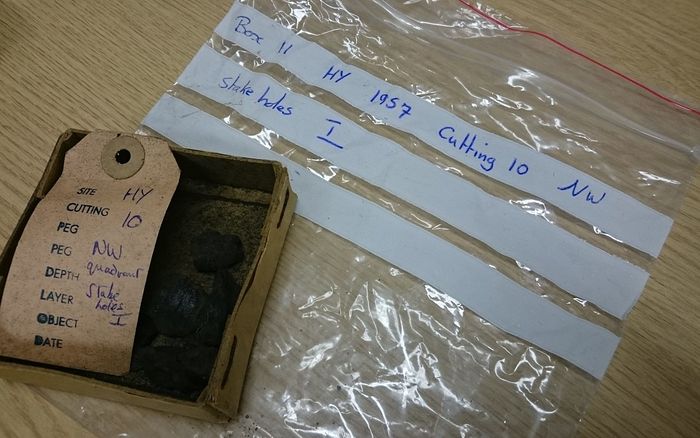 St. Columba's Cell charcoal in the original box finds, as archaeologists have uncovered conclusive evidence that a wooden hut traditionally associated with St. Columba at his ancient monastery on the island of Iona dates to his lifetime in the late sixth century CREDIT: PA
St. Columba's Cell charcoal in the original box finds, as archaeologists have uncovered conclusive evidence that a wooden hut traditionally associated with St. Columba at his ancient monastery on the island of Iona dates to his lifetime in the late sixth century CREDIT: PA Altogether, ten radiocarbon were returned after Thomas’ samples were shared with the University of Glasgow, all dating to the period between 500 and 1100 AD. The carbonized remains of the small hut were found below layers of loose pebbles, indicating that the structure had burned down, and the area covered over. The site was later marked with a cross.
St. Columba is one of the key figures to have brought Christianity from Ireland to Scotland, his zeal giving rise to Iona Abbey, which became a center for literacy, learning, and worship. Iona became a place of pilgrimage after his death. 60,000 still visit the rebuilt abbey every year, the BBC reports. The existing abbey dates to the 12th century. It ceased functioning as a monastery after the Reformation, the Catholic Herald writes, although it was revived in 1938.

